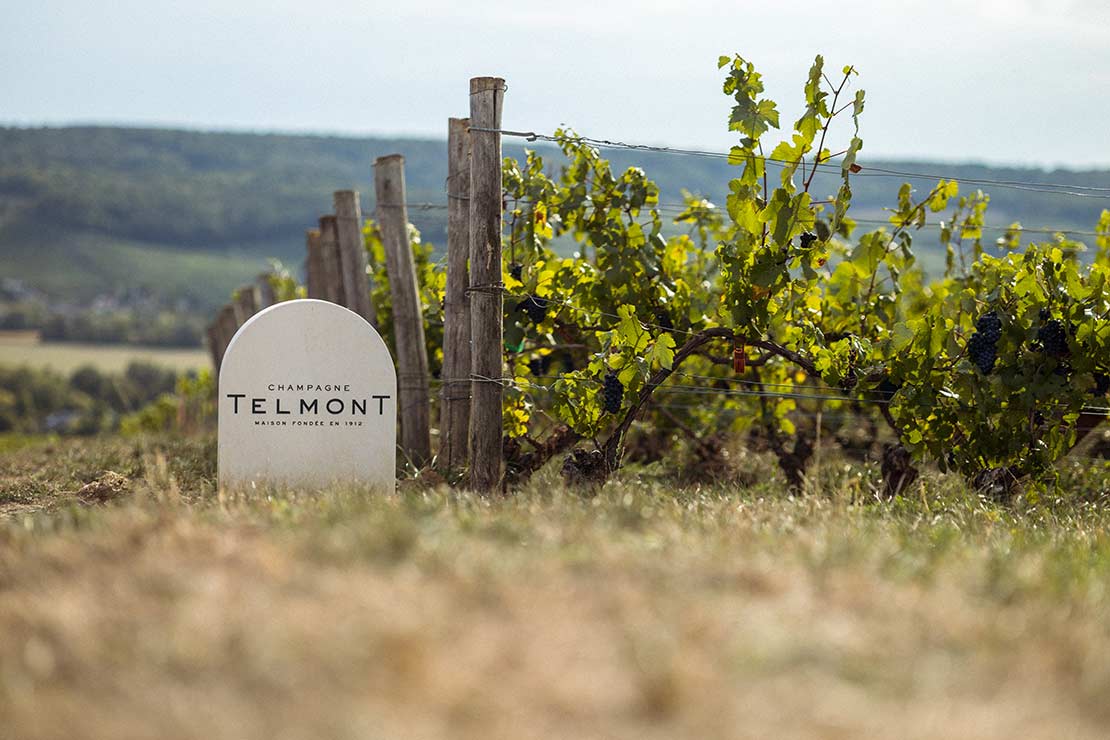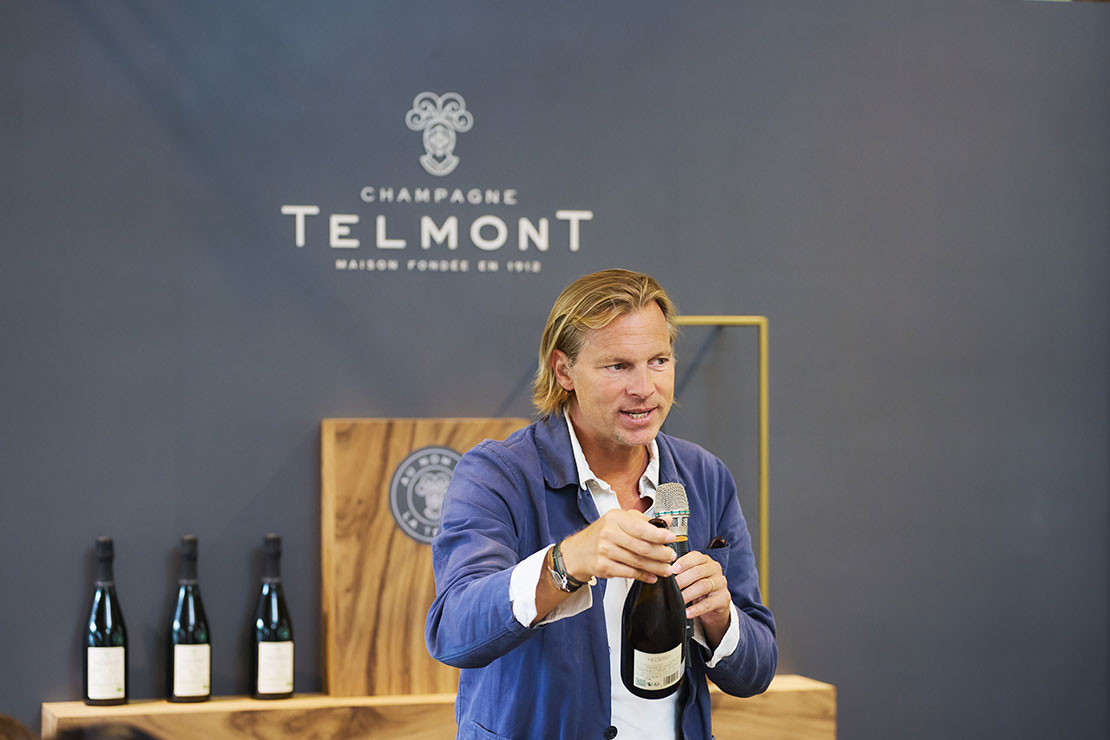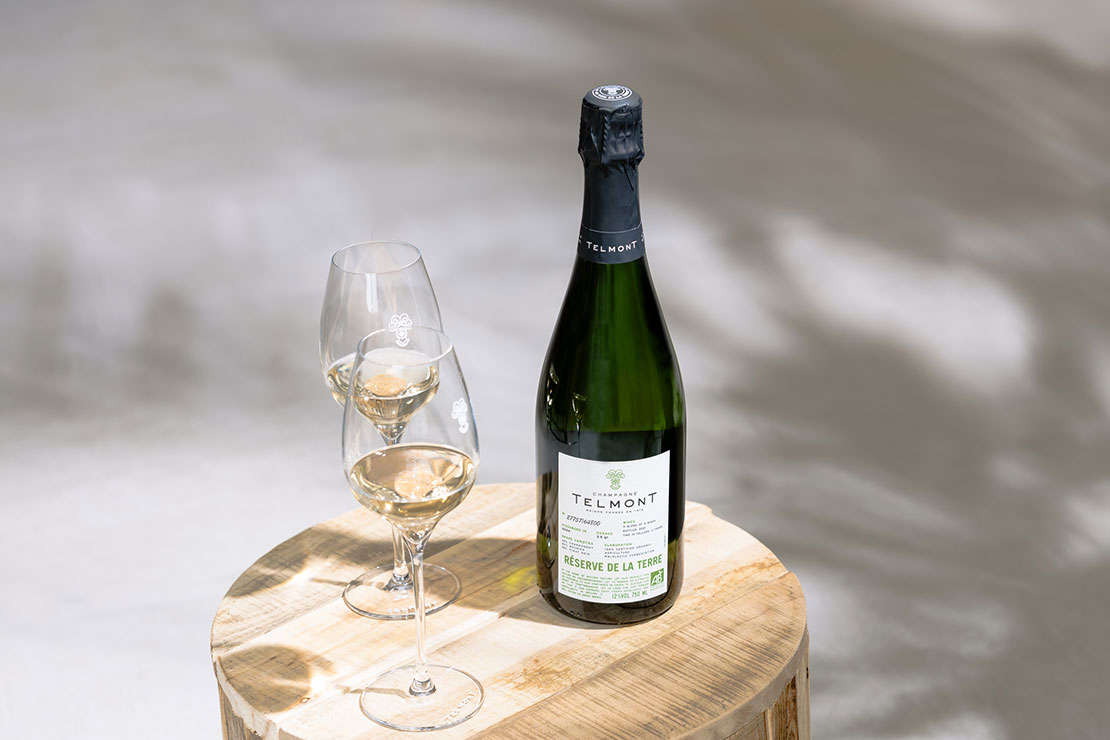Did you know that a standard champagne bottle, without the liquid, used to weigh 1,250g? The thick glass design was necessary to withstand the high pressure from fermentation, as carbon dioxide is released when yeast consumes sugar during champagne production.
In 2003, Champagne became the first wine-growing region in France to assess its carbon footprint. Since then, bottle weights have been progressively reduced – from 900g in 2010 to the current 835g. At the Singapore launch of Réserve de la Terre in September, Maison Telmont announced its next step: reducing bottle weight further to 800g by 2025.
A Century of Heritage
Maison Telmont was founded in 1912 by Henri Lhôpital, a visionary winemaker who established the Maison after the Champagne Revolt. Knowledge has since been passed down through generations, and today, the Maison is run by fourth-generation Bertrand Lhôpital, Cellar Master and Grapefather.

Maison Telmont vineyard was certified organic since 2017. [Image source: Maison Telmont]
In 2020, Remy Cointreau became Telmont's majority shareholder, with plans to transform its portfolio through sustainable practices, aligning with Telmont’s goal to convert its vineyards to 100% organic by 2031.
In 2021, Telmont launched its "Name of Mother Nature" project, aiming to protect soil vitality and biodiversity through organic viticulture. Leonardo DiCaprio, American actor and film producer, also an advocate for sustainability, invested in a minority share of the Maison Telmont in 2022, after being inspired by Bertrand’s vision for the project.
Réserve de la Terre: A Milestone in Organic Viticulture
Réserve de la Terre is the first cuvée to mark Telmont’s achievement in organic viticulture. It is a blend of three grape varieties – Meunier (44%), Chardonnay (34%), and Pinot Noir (22%) from three years: 2020 (70%), 2019 (15%), and 2018 (15%). The grapes come from vineyards that received organic certification in 2017.
At a media event held at Open Farm Community in Singapore, Ludovic du Plessis, President of Maison Telmont, addressed pressing points about sustainability in the champagne industry. He emphasised that aiming for net-zero carbon emissions, not just reduction, is the true goal. He also warned of the industry’s “greenwashing” and stressed the importance of understanding certification labels and rules.

President of Maison Telmont, Ludovic du Plessis at the launch event with a bottle of Reserve de la Terre. [Image source: Maison Telmont]
Ludovic highlighted that Réserve de la Terre exemplifies how sustainability and quality go hand in hand. By respecting biodiversity and eliminating herbicides, pesticides, fungicides, and synthetic fertilisers, Maison Telmont is able to produce a quality product.
Maison Telmont has also implemented other measures to drive its sustainability goals, including eliminating gift boxes, banning transparent bottles, and prohibiting airfreight for distribution. Telmont uses only green bottles made from 85% recycled glass and sources its electricity entirely from renewable sources. Additionally, the winemaking process and wine composition are clearly detailed on each bottle’s label to ensure transparency.
In Singapore, Réserve de la Terre is available at leading restaurants and bars, including the city’s flagship Telmont bar at Bayside, and the sustainability-focused restaurant, Open Farm Community.
- T -
